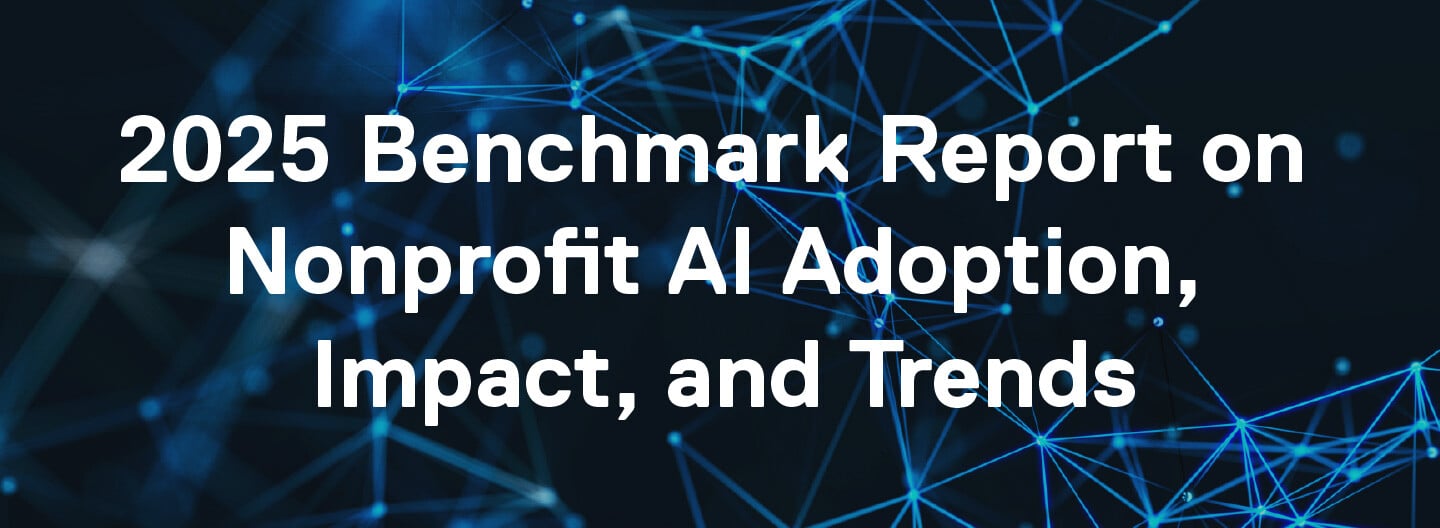Content marketing is a strategy that focuses on creating and publishing high-value assets that will attract new supporters. Nonprofits can use content marketing to help accomplish almost any marketing goal they have. The content you choose to create might include blogs, videos, infographics, and downloadable content like curriculum guides and webinars.

Using the Tapp Network and TechSoup 2022-2023 Nonprofit Digital Marketing Benchmark Report, let's take a look at content marketing all nonprofits can use, how and what you're going to create, and some tips to get you started!
What Content Marketing Should I Be Focusing On?
In order to decide on the most effective form of content marketing for your organization, ask yourself these questions:
- What are your marketing goals?
- What audience are you trying to reach with your content?
- Where does your audience exist on the Internet, and what kind of content does your target demographic consume?
Once you have those answers, you need to consider the skills and bandwidth of your team. If you want to share video content, do you have a team member with the time and skill to create videos? If not, consider other types of content that can accomplish the same goals or consider enlisting external help to create videos. The TechSoup Digital Marketing services team offers a variety of marketing services and is ready to help you make your content marketing dreams a reality.
Let's Talk Blogging
Nonprofits of any size can use blogs as part of their content marketing strategy. You can hone your blogging strategy to accomplish goals like brand awareness, thought leadership, fundraising, and program enrollment. Blogs are one of the lowest-cost content pieces a nonprofit can produce, are easily shared through email and social media, and are one of the best ways to bring new traffic to your website.
According to the benchmark survey, 68 percent of nonprofits do not have blogs, and of those who do, 47 percent are only blogging a few times a year. This is a missed opportunity to promote thought leadership, drive impact, and raise awareness in your nonprofit field. If you can consistently and efficiently target your audience with your blog content, you can capture and retain readers and convert those readers into customers, supporters, and advocates for your organization.
SEO and Blogging
In order for prospective readers to find blogs, you need to consider their SEO value. Search engine optimization (SEO) is the process of improving both the quality and quantity of website traffic to your website or landing page from search engines. When you publish a new blog post, search engines monitor (or "crawl through") the content of the blog and your website and identify keywords. The keywords help to identify what the topic of your content is, and from there, your website is given a ranking on search engines based on the strength of your keywords. The more consistent you are in blog publishing, the better your SEO will become over time. This will allow your website to rank higher in search engine results.
What Should I Write About?
The benchmark report shows us the top five objectives that nonprofits are focusing their blogs around:
- Education: Educational blogs can help increase your readers' understanding of your organization and mission. You are an expert in the field you work in, so sharing information about your mission area is a great way of using the knowledge you already have to educate others.
- Announcements: If public relations (PR) isn't a major part of your marketing strategy, you can use your blog as your nonprofit's newsroom and share updates on your organization, upcoming events, press releases for new initiatives, and important news that concerns your nonprofit's work.
- Information: Information blogs can feel similar to educational blogs, but we want to put more emphasis on the problem that is facing your community or field and how your nonprofit's work is going to solve that problem. An example of an information blog could be writing about the current rise in inflation and the impact that has on your community. It gives you the opportunity to connect real facts to the work you are doing and will position you to ask readers to engage by donating, volunteering, or attending an event.
- Fundraising: Including regular calls to action (CTAs) in all content is good practice for nonprofits. However, it can also be useful to create fundraising-specific blogs. You can use these to humanize the need for donations, show current and potential donors the importance and impact of their gift, and thank donors for their gift. An interview with a current or former client can be a great way of showing the impact of your work and encouraging new donations.
- Organization-Specific Goals: What goals are you trying to accomplish that can't be covered in these other types of blogs? Are you looking to recruit new team members? Write a blog on your company culture. Are you looking to increase enrollment in a program? Survey your current program participants and build a blog out of their responses and highlight their biggest takeaways.
These five objectives show us that it is possible to create high-impact content that can fit any marketing goal or target audience of your nonprofit. Make sure to include a call to action in each piece of content so your readers have a clear next step. Depending on the subject of the blog and your organizational need, your CTA might be to a newsletter sign-up, volunteer form, donation page, or event registration.
Download the Full Report
Want to gain more insight into the current state of digital marketing for nonprofits? Download the 2022-2023 Nonprofit Digital Marketing Benchmark Report! If you and your nonprofit want to get started on improving your digital presence, reach out to our team at TechSoup Digital Marketing Services and see how we can help!
About the Author
Lacey Eriksen (they/them) is an account manager for Tapp Network. In their role, Lacey strives to strategize and execute dynamic content that will help clients achieve their marketing goals. Totally fascinated by all things social media, they keep up with all the rising trends so they can provide clients with valuable recommendations.
Additional Resources
- See a webinar on the Five Biggest Mistakes in Content Creation.
- Learn the Creative Content Best Practices for Nonprofits in 2023.
- Find out how to Know Your Audience: Writing Content That Reaches the Right People.
- Take a TechSoup Courses series on Word for Nonprofits — Creating Compelling Documents.
Top photo: Shutterstock








